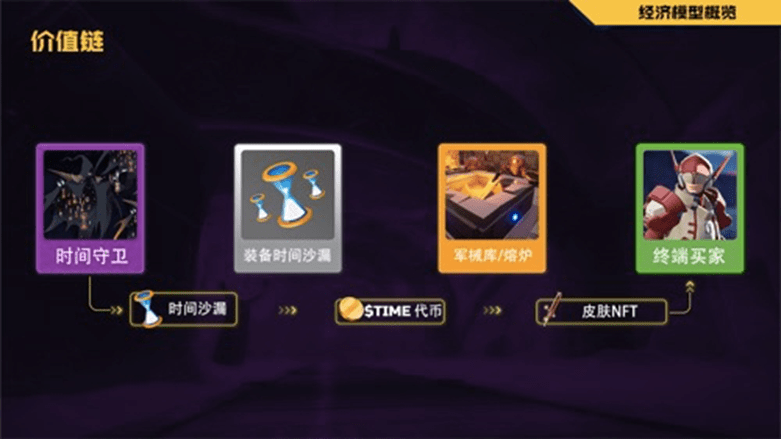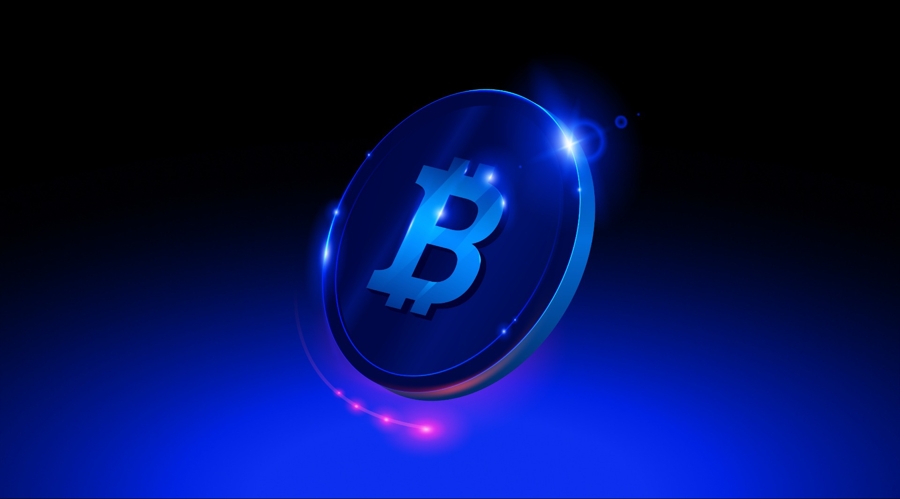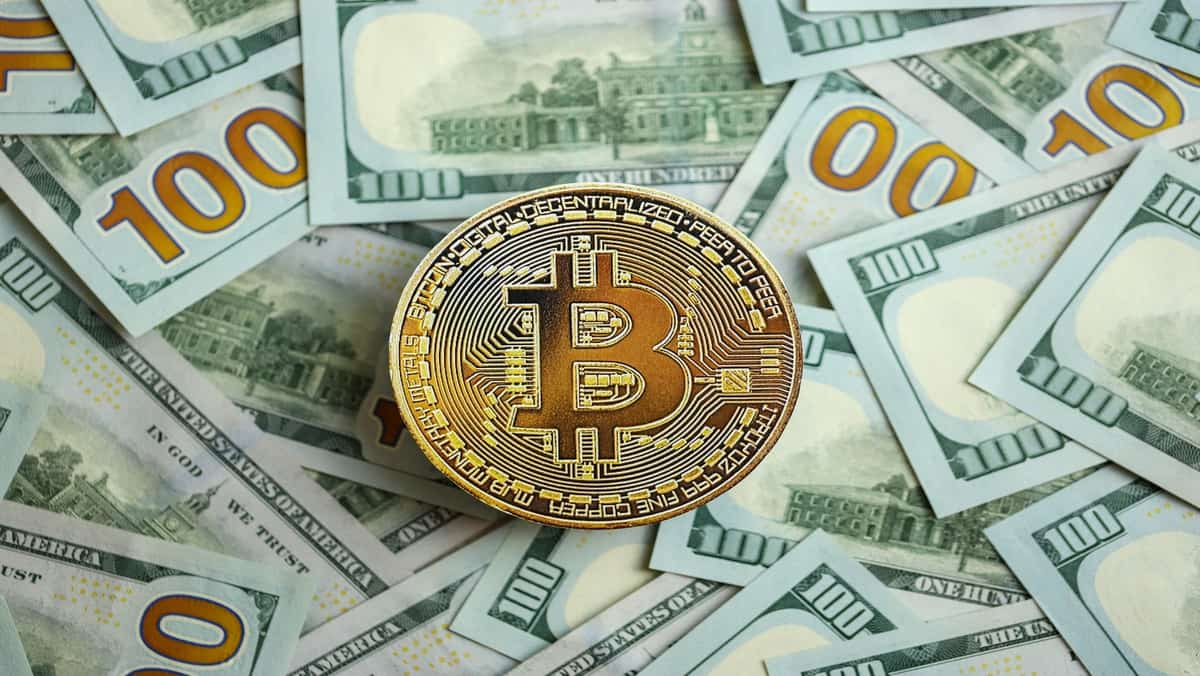Author: Daniel Li, CoinVoice
Big Time is a controversial GameFi project. Although it had accumulated momentum for two years at the beginning of its launch, what is surprising is that just five days later, the myth of instant wealth promoted by Big Time was shattered. Many investors found themselves trapped in a trap at a high point, facing problems such as a sharp drop in currency prices, a reduction in the explosion rate, and the KYC verification of withdrawals was blocked. For ordinary players, they are now also faced with rising entry costs and extended payback cycles. Therefore, players jokingly called Big Time a leek plate for a while.
However, we cannot deny the innovation of Big Time as a Web2.5 chain game. Compared with traditional Web3 chain games, Big Time pays more attention to the experience of the game itself. It launches 3A-level game quality, which is not inferior even when compared with some old Web2 games. In addition, Big Time has also made new explorations in the economic model. However, not long after the game was launched, Big Time frequently experienced problems, causing public doubts about it. Therefore, let’s discuss in depth whether Big Time is a game-breaker or a flash in the pan.
Big Time is suspected of cutting leeks?
Big Time’s token BIGTIME plummeted 15% in just 10 minutes on the morning of October 18. This situation triggered a lot of criticism in the relevant communities, because Big Time users generally faced a series of problems, including difficulty in passing KYC verification, inability to withdraw cash, plummeting currency prices, and longer payback periods. Some users began to trace some of the actions of the Big Time project team during this period and found that Big Time was suspected of cutting leeks.

First of all, according to data from CoinMarketCap, the current circulation of Big Time’s token BIGTIME is 147 million. However, market makers Amber Group and FBG Capital hold 60 million Big Time tokens each. In other words, the holdings of these two market makers account for more than 80% of the total circulation. This highly concentrated currency holding structure is extremely rare in normal projects. By controlling more than two-thirds of the total circulating tokens, market makers are able to manipulate price movements at critical moments and profit from them. Moreover, this advantage becomes even more obvious after Big Time is listed on mainstream exchanges such as Coinbase. This can also explain why BIGTIME soared by 267% in a short period of time after being launched, but then fell rapidly.
Secondly, the design of Big Time projects almost always focuses on expanding the interests of early participants and market makers. The project uses an invitation mechanism, and new users must obtain invitation codes from old users before they can enter the game. Currently, people are selling invitation codes for Big Time on major communities and second-hand trading platforms. As the price of BIGTIME soars, the price of invitation codes is also rising. Currently, an invitation code sells for about 150 yuan. Through this invitation code distribution mechanism, new users can only participate by purchasing invitation codes at high prices, similar to illegal private transactions. In addition, the entry cost of the game is also gradually increasing. The current cost of an account is 1200U (these costs will be spent on purchasing in-game equipment). This can easily attract and lock in new users, making it difficult for latecomers to catch up with old users.
In addition, project incentives seem to shift risks to users. The game requires a huge investment of time and money, but the rewards diminish over time. This black box design extracts ongoing payments by exploiting user behavioral biases. According to feedback from some old users, the game requires very high computer configurations and basically requires a game laptop to run properly. In addition, as the Big Time project team has lowered the currency explosion rate, players need to spend more time on the game and continue to purchase time crystals. If players play alone, they will basically lose money.
Finally, the Big Time project clearly targets Chinese users and takes full advantage of China's policies. On the one hand, it took full advantage of China's huge user base and quickly attracted a large number of users. On the other hand, it also took advantage of mainland China's encryption policy to delay users' withdrawals by requiring mainland users to undergo KYC certification to slow down the process of users' currency withdrawals, thus prolonging the popularity of the project. It is worth mentioning that the market-making institutions Amber Group and FBG Capital selected by Big Time both originated from Chinese teams.
Big Time is the game breaker?
It is indeed difficult for Big Time to prove its innocence for the above-mentioned problems, but fortunately for users, most chain games are just a game to see who can run faster, and they have long been accustomed to this. If you put aside some of the above-mentioned frivolous operations of Big Time, the intuitive feeling of the Big Time project is that it is still a very ideal and pursuing project.

Big Time project background
Big Time is a multiplayer action role-playing game for PC, founded in April 2021. The game combines elements of classic games such as World of Warcraft and Diablo, including fast-paced action battles, NFT collection and decoration, and adventures across time and space. As one of the early on-chain games that focused on the AAA concept, Big Time uses the Ethereum chain as the underlying technology and adopts a two-layer architecture of "on-chain assets and off-chain games" to provide a smooth gaming experience.
Big Time's team is led by Ari Meilich, the former founder and CEO of Decentraland. Its members come from top game companies such as Epic Games, Blizzard, EA and Riot, and have rich game development experience. Big Time conducted two rounds of financing in May 2021, raising a total of US$21 million, including the participation of well-known investment institutions such as FBG Capital. In addition, Big Time sold game pass NFTs and other virtual assets in the testing phase through the Binance NFT market and the official market, with sales exceeding $70 million. These funds also provided important support for the development of Big Time.
Big Time game mode
Big Time is an engaging multiplayer action role-playing game spanning time and space. In this game, players take on the role of a hero and travel through history to embark on an adventure. They will face walls of time, fight fierce battles with monsters and powerful bosses, while exploring dungeons and collecting legendary equipment.
In Big Time, players can choose from four different professions: Time Warrior, Chronomancer, Shadow Blade, and Quantum Repairer. Each class represents a different character type, such as warrior, mage, assassin, and support. The game also provides a job-changing mechanism, allowing players to change careers at any time. They only need to use special props to complete the career change.

There are two types of virtual items in the game: decorative NFTs and functional NFTs. Decorative NFTs are mainly used to beautify the appearance of characters, similar to skins in games. They do not provide additional combat power. Functional NFTs include: furnace, armory and time guard. Players can build these facilities in their personal metaverse (SPACE) and gain various benefits from them, such as producing tokens or crafting powerful weapons and skins.
The charm of Big Time lies in its clever blend of fast-action combat, NFT collection, and elements spanning history, bringing players a challenging and creative gaming experience. In terms of playability alone, Big Time is indeed ahead of most current chain games.
Big Time Economic Model
Big Time introduces a unique and innovative economic model that differentiates it from the traditional dual-token model commonly seen in blockchain games. There is only one token in Big Time, called $BIGTIME, with a total supply of 5 billion. These tokens are generated entirely through gameplay, as there are no reservations or fundraising allocations by the team. According to the official website, 60% of the available BIGTIME tokens will be distributed to players as rewards, 20% will be allocated to community referrals, and the remaining 20% will be used for ecosystem and financial needs.
BIGTIME tokens have a variety of uses in the game, including refining, crafting, and upgrading in the Forge and Armory. Players can also use BIGTIME tokens to speed up the production timer at the Forge or Armory. Additionally, they can utilize BIGTIME tokens to pay for access to reputable gateway websites.

There are three main ways players can earn BIGTIME tokens in the game. First, they can randomly acquire broken hourglasses that drop within their personal virtual universe (called "space"). These hourglasses are single-use items that generate BIGTIME tokens when equipped. Secondly, players can spend time crystals to make hourglasses and recharge them to produce BIGTIME tokens. Finally, players can purchase already generated BIGTIME tokens from the market or receive them via team airdrops.
In addition to the BIGTIME token, the game also features other assets that can be traded on the Open Loot platform, such as skin shards, SPACE NFTs, decorative NFTs, and functional NFTs. Therefore, participating in the game's economic cycle involves various activities, including defeating monsters, clearing dungeons to obtain skin fragments to trade on the market, and obtaining uncraftable skin NFTs for subsequent transactions.
For free players, you can participate in the game’s economic cycle through the aforementioned paths. However, due to the low drop rate of rare resources, free players may need to invest a lot of time and energy. Trading skin shards will likely become their primary means of participating in the full game economy. For paying players, participating in the game’s economic cycle becomes more strategic. They need to find the right balance between resources like time crystals, BIGTIME tokens, and skin shards. Paying players can leverage their SPACE and functional NFTs to produce more skin NFTs and BIGTIME tokens, which can then be traded on the market.
Big Time's economic model is more innovative than traditional Web3 games, and it incorporates elements of Web2 games. By introducing a number of exciting features, including a token sinking mechanic, a rotational system, and staged pacing, Big Time allows players to move beyond the "financial player" archetype and choose from a variety of roles, such as Free Experience Seekers, Material harvest enthusiasts, time collectors, etc. Assassin gold farmer, or cosmetics lover. Essentially, both free and paid players can find a character that suits their preferences and actively participate in the economic cycle created by Big Time.
BigTime: Challenge the dual-currency economic model and explore new directions for GameFi
As the earliest first-generation blockchain game, AXIE has introduced the Play2Earn model, allowing blockchain games to begin to reach the public. However, with the increase of game players, Play2Earn has become divided. Most players cannot really make money, and only a small number of players can make money while playing. In order to solve this problem, a dual-currency economic model has emerged in chain games. However, the dual-currency model does not realize the cycle of the game economy. It is essentially a Ponzi economic structure that digests the previous bubble by creating a new bubble. But how to digest this new bubble? Is it necessary to issue another new currency and create a three-currency economic model? So how to digest the third bubble?
The current market consensus is to return to the consumption attribute, make the game playable, attract big players to the market, and let big players act as the final takers. In this regard, Big Time is indeed ahead of most chain games. Although the Big Time project is suspected of cutting leeks, it is undeniable that Big Time has introduced a game creator economy, allowing players to freely produce game props and It can circulate freely in the market, which undoubtedly provides a valuable reference for the future development of chain games.
Web3 game practitioners need to recognize the reality that the game industry does not need Web3 that much. One more game asset on the chain will not bring them much benefit, but will bring them a lot of trouble. Web2 games themselves have a mature money-making model. They can build their own trading platform for players to trade internally. And for players, the game experience is the real first priority. They don’t care at all whether your prop is really on the chain or in the database.
In contrast, Web3 is more eager to use the game industry as a landing scenario. For many years, Web3 has not seen a large-scale mature application like Web2. As one of the easiest scenarios to attract users, the game industry is naturally the focus of Web3. However, in the past, Web3 was obsessed with putting assets on the chain and tokenizing game assets. It was far less mature than Web2 in terms of game experience and novel gameplay. This also prevented Web3 chain games from truly entering the public.
Future chain games need to ensure the playability and entertainment of the game, so that big players can gain a sense of accomplishment in the game, thereby providing power for the entire game economic cycle. At the same time, it is necessary to build an on-chain economy and introduce more financial gameplay to ensure the flexibility and scalability of the game economy. In this regard, more chain games like Big Time need to continue to explore and try. Although Big Time is currently caught in a storm of public opinion, from the perspective of exploring new models of future chain games, Big Time is already much better than the older generation of chain games that are still resting on their laurels.
















